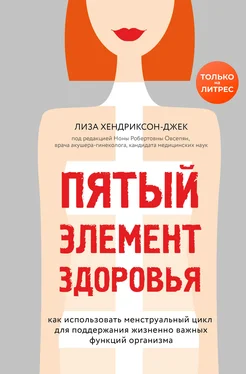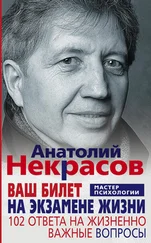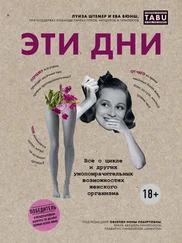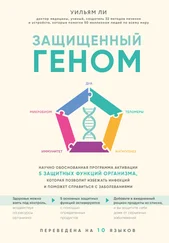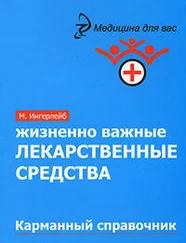3. Hatcher, Robert Anthony, and Anita L. Nelson. Contraceptive Technology. Ardent Media, 2007: 337–342; Trussell, James, and Kathryn Kost. “Contraceptive failure in the United States: a critical review of the literature.” Studies in Family Planning 18, no. 5 (1987): 237–283.
4. Zukerman, Zvi, David B. Weiss, and Raoul Orvieto. “Does preejaculatory penile secretion originating from Cowper’s gland contain sperm?” Journal of Assisted Reproduction and Genetics 20, no. 4 (2003): 157–159.
5. Там же; Pudney, Jeffrey, Monica Oneta, Kenneth Mayer, George Seage III, and Deborah Anderson. “Pre-ejaculatory fluid as potential vector for sexual transmission of HIV-1.” The Lancet 340, no. 8833 (1992): 1470; Ilaria, Gerard, Jonathan L Jacobs, Bruce Polsky, Brian Koll, Penny Baron, Clarinda Maclow, Donald Armstrong, and Peter N Schlegel. “Detection of HIV-1 DNA sequences in pre-ejaculatory fluid.” The Lancet 340, no. 8833 (1992): 1469;
6. Killick, Stephen R., Christine Leary, James Trussell, and Katherine A. Guthrie. “Sperm content of pre-ejaculatory fluid.” Human Fertility 14, no. 1 (2011): 48–52.
7. Mauck, Christine K., Vivian Brache, Thomas Kimble, Andrea Thurman, Leila Cochon, Sarah Littlefield, Kim Linton, Gustavo F. Doncel, and Jill L. Schwartz. “A phase I randomized postcoital testing and safety study of the Caya diaphragm used with 3 % nonoxynol-9 gel, ContraGel or no gel.” Contraception 96, no. 2 (2017): 124–130; Chakraborty, Debanjana, Arindam Maity, Tarun Jha, and Nirup Bikash Mondal. “Spermicidal and contraceptive potential of desgalactotigonin: a prospective alternative of nonoxynol-9.” PloS One 9, no. 9 (2014): e107164; Stafford, Michael K., Helen Ward, Adrienne Flanagan, Isobel J. Rosenstein, David Taylor-Robinson, J. Richard Smith, Jonathan Weber, and Valerie S. Kitchen. “Safety study of nonoxynol-9 as a vaginal microbicide: evidence of adverse effects.” Journal of Acquired Immune Deficiency Syndromes 17, no. 4 (1998): 327–331; Niruthisard, Somchai, Ronald E. Roddy, and Supawat Chutivongse. “The effects of frequent nonoxynol-9 use on the vaginal and cervical mucosa.” Sexually Transmitted Diseases 18, no. 3 (1991): 176–179.
8. Frank-Herrmann, P., J. Heil, C. Gnoth, E. Toledo, S. Baur, C. Pyper, E. Jenetzky, T. Strowitzki, and G. Freundl. “The effectiveness of a fertility awareness based method to avoid pregnancy in relation to a couple’s sexual behaviour during the fertile time: a prospective longitudinal study.” Human Reproduction (2007).
9. Guermandi, Ellade, Walter Vegetti, Massimiliano M. Bianchi, Anna Uglietti, Guido Ragni, and Piergiorgio Crosignani. “Reliability of ovulation tests in infertile women.” Obstetrics & Gynecology 97, no. 1 (2001): 92–96.
10. Johnson, Sheri L., Jessica Dunleavy, Neil J. Gemmell, and Shinichi Nakagawa. “Consistent age-dependent declines in human semen quality: a systematic review and meta-analysis.” Ageing Research Reviews 19 (2015): 22–33; Swan, Shanna H., Eric P. Elkin, and Laura Fenster. “The question of declining sperm density revisited: an analysis of 101 studies published 1934-1996.” Environmental Health Perspectives 108, no. 10 (2000): 961–966.
11. Carlsen, Elisabeth, Aleksander Giwercman, Niels Keiding, and Niels E. Skakkebaek. “Evidence for decreasing quality of semen during past 50 years.” The BMJ 305, no. 6854 (1992): 609–613.
12 Levine, Hagai, Niels Jørgensen, Anderson Martino-Andrade, Jaime Mendiola, Dan Weksler-Derri, Irina Mindlis, Rachel Pinotti, and Shanna H. Swan. “Temporal trends in sperm count: a systematic review and meta-regression analysis.” Human Reproduction Update 23, no. 6 (2017): 646–659.
13. Там же.
14. Rolland, Matthieu, J.l. Le Moal, V. Wagner, Dominique Royère, and J. De Mouzon. “Decline in semen concentration and morphology in a sample of 26 609 men close to general population between 1989 and 2005 in France.” Human Reproduction 28, no. 2 (2012): 462–470; Geoffroy-Siraudin, Cendrine, Anderson Dieudonné Loundou, Fanny Romain, Vincent Achard, Blandine Courbiere, Marie-Hélène Perrard, Philippe Durand, and Marie-Roberte Guichaoua. “Decline of semen quality among 10 932 males consulting for couple infertility over a 20-year period in Marseille, France.” Asian Journal of Andrology 14, no. 4 (2012): 584–590; Chen, Z., K.B. Isaacson, T.L. Toth, L. Godfrey-Bailey, I. Schiff, and R. Hauser. “Temporal trends in human semen parameters in New England in the United States, 1989–2000.” Archives of Andrology 49, no. 5 (2003): 369–374; Auger, Jacques, Jean Marie Kunstmann, Francoise Czyglik, and Pierre Jouannet. “Decline in semen quality among fertile men in Paris during the past 20 years.” New England Journal of Medicine 332, no. 5 (1995): 281–285; Huang, Chuan, Baishun Li, Kongrong Xu, Dan Liu, Jing Hu, Yang Yang, Hongchuan Nie, Liqing Fan, and Wenbing Zhu. “Decline in semen quality among 30,636 young Chinese men from 2001 to 2015.” Fertility and Sterility 107, no. 1 (2017): 83–88; Irvine, Stewart, Elizabeth Cawood, David Richardson, Eileen MacDonald, and John Aitken. “Evidence of deteriorating semen quality in the United Kingdom: birth cohort study in 577 men in Scotland over 11 years.” The BMJ 312, no. 7029 (1996): 467–471.
15. Kumar, Naina, and Amit Kant Singh. “Trends of male factor infertility, an important cause of infertility: a review of literature.” Journal of Human Reproductive Sciences 8, no. 4 (2015): 191–196.
1. Viergiver, Ellenmae, and W.T. Pommerenke. “Measurement of the cyclic variations in the quantity of cervical mucus and its correlation with basal temperature.” American Journal of Obstetrics and Gynecology 48, no. 3 (1944): 321–328.
2. Odeblad, Erik. “The discovery of different types of cervical mucus and the Billings Ovulation Method.” Bulletin of the Natural Family Planning Council of Victoria 21, no. 3 (1994): 14; Klaus, Hanna. “Natural family planning: a review.” Obstetrical & Gynecological Survey 37, no. 2 (1982): 4–6.
3. Odeblad, Erik. “The discovery of different types of cervical mucus and the Billings Ovulation Method.” Bulletin of the Natural Family Planning Council of Victoria 21, no. 3 (1994): 14.
4. Matus, Geraldine Ed. “Atypical Mucus Patterns Accompanying Ovulation.” Justisse HRHP Training Program. Justisse College. Accessed February 5, 2017. www.justisse.ca/index.php/college/courseware/page/1308.
5. Elkind-Hirsch, Karen E., Kathy Phillips, Sandra M. Bello, Milton McNicho, and Dominique de Ziegler. “Sequential hormonal supplementation with vaginal estradiol and progesterone gel corrects the effect of clomiphene on the endometrium in oligo-ovulatory women.” Human Reproduction 17, no. 2 (2002): 295; Glud, Eva, Susanne Kriiger Kjaer, Rebecca Troisi, and Louise A. Brinton. “Fertility drugs and ovarian cancer.” Epidemiologic Reviews 20, no. 2 (1998): 238.
6. Van der Merwe, J.V. “The effect of clomiphene and conjugated oestrogens on cervical mucus.” South African Medical Journal 60, no. 9 (1981): 347-349; Massai, Maria Rebecca, Dominique de Ziegler, Valerie Lesobre, Christine Bergeron, René Frydman, and Philippe Bouchard. “Clomiphene citrate affects cervical mucus and endometrial morphology independently of the changes in plasma hormonal levels induced by multiple follicular recruitment.” Fertility and Sterility 59, no. 6 (1993): 1179–1186; Acharya, U., D.S. Irvine, M.P.R. Hamilton, and A.A. Templeton. “The effect of three anti-oestrogen drugs on cervical mucus quality and in-vitro sperm – cervical mucus interaction in ovulatory women.” Human Reproduction 8, no. 3 (1993): 437–441; Roumen, F.J. “Decreased quality of cervix mucus under the influence of clomiphene: a meta-analysis.” Nederlands Tijdschrift voor Geneeskunde 141, no. 49 (1997): 2401–2405.
Читать дальше
Конец ознакомительного отрывка
Купить книгу
